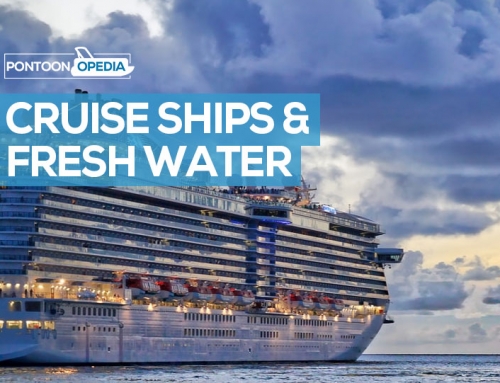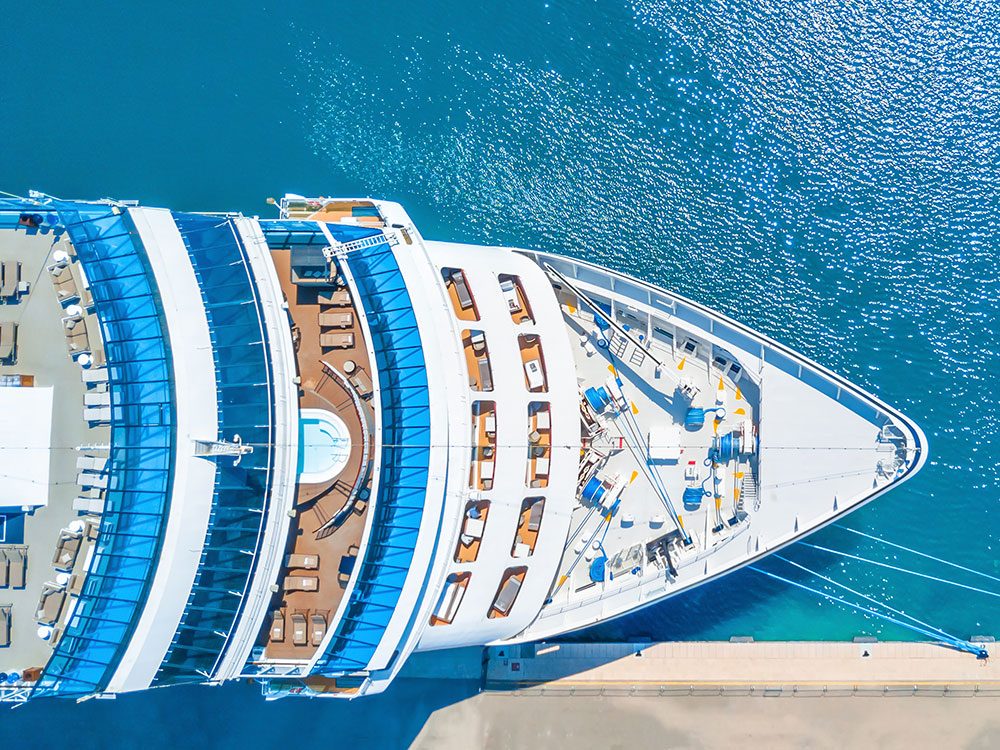Table Of Content

Upscale, luxury cruise lines and river cruise lines include bottled water in your stateroom, in eating facilities, at the gangway in port and often on excursions at no additional charge. In some of those cases, water in your stateroom is provided in refillable glass carafes or bottles. Some ships only use port water for non-drinking uses, such as engine cooling, washing, or ballast. To enhance the amount of drinking water that is accessible, other oceangoing ships also desalinate and treat port water. Cruise ships must have water bunkering since their water treatment systems can only run when they are at sea. Once freshwater has been stored onboard, it can be distributed throughout the ship using a series of pipes and valves.
Reverse osmosis
Cruise ships produce drinking water through steam evaporation or reverse osmosis. The cruise ship adds minerals and chlorine to the desalinated water for taste and added safety. Cruise ships will carry as much fresh water as they need for each passenger unless of course it’s larger modern vessel that can make its own drinking water. Some cruise ships can hold up to 2 million laters of water at any given point in time. On a cruise ship, water is needed for numerous purposes, such as drinking, cooking, cleaning, and sanitation. Additionally, water plays a crucial role in powering various systems, including air conditioning, fire suppression, and even propulsion in some cases.
Are Drinks On Ice Safe On A Cruise?
Passengers expect high-quality water that is free from contaminants and safe to consume. Similarly, crew members rely on clean water for their daily activities and personal needs. Additionally, water is used for various onboard facilities, such as swimming pools, spas, and laundry services.
How do cruise ships drain their pools at night?
By implementing water conservation strategies and technologies, cruise ships are actively taking steps to reduce their water footprint and preserve freshwater resources. These efforts contribute to a more sustainable and environmentally-friendly cruising experience. One of the primary methods of water conservation is through the use of water-efficient fixtures and appliances. Cruise ships are equipped with low-flow faucets, showerheads, and toilets, which reduce the amount of water consumed during daily use. These fixtures are designed to maintain water pressure while minimizing wastage, allowing passengers and crew members to enjoy a comfortable experience while saving water.
Rather, the International Maritime Organization and local legislation dictate the distance from land at which treated water must be released into the ocean. Salt and other contaminants stay behind on the intake side, while the water that passes through is mineralized. Mineralization and flavoring of filtered water on cruise ships is done according to the specifications of US Public Health Service guidelines. Each reverse osmosis filter produces about 12 – 15 m3/h fresh water, depending on the condition of the filters and seawater quality. Since cruise ships need so much water for their passengers and services, they have their own distilling filtration systems onboard, called flash or steam evaporators.
Disney Wish cruises towards net-zero through fuel efficiency and emission control - Ship Technology
Disney Wish cruises towards net-zero through fuel efficiency and emission control.
Posted: Mon, 12 Feb 2024 08:00:00 GMT [source]
How Much Water to Drink When Pregnant: Everything You Need to Know
This can be caused by factors such as mechanical failure, human error, or other issues. Once pre-filtration has been completed, the seawater can undergo the primary purification process. This typically involves the use of a desalination plant, evaporator, reverse osmosis, or watermaker, depending on the specific systems installed on the ship. These systems work by removing salt, bacteria, and other contaminants from the seawater, leaving only freshwater behind. They use many different methods to purify the water through various processes and reuse as much water as possible for other components on the ship. This is a clever way of reducing consumption and keeping everything safe for the environment.
Ever wonder how there’s always enough water for everyone on a cruise ship? From strong shower pressure in each stateroom to the seemingly endless stream for our waterslides, at Royal Caribbean, we use state-of-the-art technology to produce our own water supply. And this helps ensure that we do not tap local water supplies in areas where the resource is limited. Cruise ships frequently have more demand for freshwater than their freshwater systems can handle. To accommodate demand, clean water stores are located on board cruise ships. Although the seawater is acceptable to swim in, it shouldn’t be consumed because the cruise line filters and chlorinates it.
Fortunately, we have a process called desalination, which is the removal of salt and other impurities from water, and there are two standard methods of doing it. In this context, bunkering means the carrying of freshwater from a local source in port and loaded onto the ship. There are 4 main ship launching methods that can be used to get a cruise ship into the water.

Is it cheaper to buy a bottled water package or pay as I go?
Most ships can store 500,000 gallons of fresh water in massive tanks located in the hold area. After guests have used the water for showering, toilet water, laundry, etc., the crew treats it before releasing it into the ocean. If everyone consumes an average of half a gallon of drinking water daily, a large volume of freshwater is consumed. A couple of other points worth mentioning – firstly, the ice on board is made using the same drinking water that’s been through the same processes.
Additionally, by obtaining freshwater from seawater, cruise ships can be self-sufficient and not rely on external sources for their water supply. This can be especially important during longer voyages or when traveling to remote destinations where access to freshwater may be limited or non-existent. All potable water on a cruise ship is frequently treated, filtered, and tested as it has to meet the standards set by the World Health Organization and USPH. As a result, many smaller cruise ships and river cruise ships employ extra filtration systems in their galley. Ship engineers and designers cleverly designed flash evaporators around the engine compartments on ships to increase efficiency. Usually, there are two flash evaporators and engine compartments onboard a vessel, forward and aft.
It is an essential element that allows cruise ships to operate self-sufficiently in remote locations and provide an enjoyable and comfortable experience for guests. Now that we understand the desalination process, let’s explore how cruise ships store and treat the water to maintain its quality throughout the journey. It’s important to note that the desalination process requires a significant amount of energy.
The main reason why transporting saltwater is more costly than transporting freshwater is due to its weight. When you add up the total amount of water contained within a container, then multiply this number times the price per pound, you’ll get an idea of just how pricey it is to transport saltwater. Department of Transportation, the average price per ton of ocean freight ranges between $1-$2 dollars. If we assume that a single gallon weighs 8 pounds, then multiply 8 x $0.01 $8.00.
Cleaning up cruise ships' environmental wake - Mongabay.com
Cleaning up cruise ships' environmental wake.
Posted: Wed, 04 Oct 2023 07:00:00 GMT [source]
The main reason for this is that the ships spend quite a large amount of time at ports. An average cruise liner operating in say, the US-Caribbean route can have as many as 5 port days in a week. A cruise ship could be docked for an average of 8-10 hours, which can at times even go up to 12 hours. Flash evaporators on cruise ships typically require a considerable amount of space. They have a large footprint and longitudinally extend to nearly the whole length of the compartment in which they are placed. Usually two in number, they are strategically placed close to or inside their respective engine compartments.
Cruise ships provide a luxurious and enjoyable vacation experience for millions of passengers each year. These floating resorts offer a wide range of amenities, including exquisite dining options, world-class entertainment, and breathtaking views. But have you ever wondered where these massive vessels get their drinking water from?

No comments:
Post a Comment